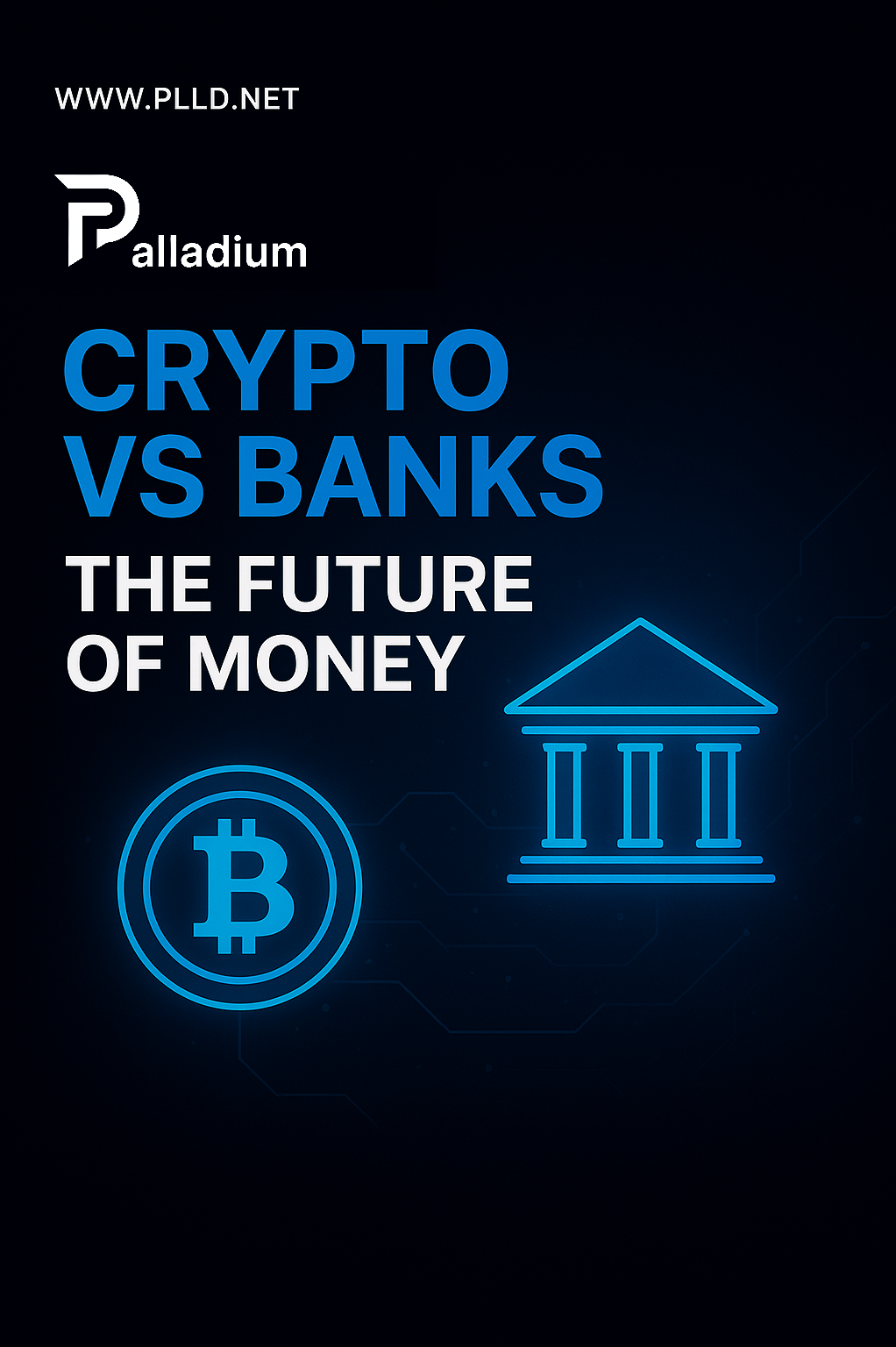
By Palladium Team
·
August 25, 2025
Crypto vs Banks: The Future of Money
The financial world is evolving fast, and one of the biggest debates today is Crypto vs Traditional Banks. Both play key roles in managing money, but they operate in very different ways. Let’s break it down:
🏦 Banks – The Traditional System
Banks have been the foundation of global finance for centuries. They offer:
- Security & Regulation: funds are usually insured and protected by governments.
- Services: loans, mortgages, savings accounts, payment systems.
- Trust: people rely on banks for stability in times of crisis.
But banks also have limitations:
- High fees & slow transfers (especially across borders).
- Limited accessibility for people in underbanked regions.
- Centralized control, meaning governments and institutions decide the rules.
🔗 Crypto – The Decentralized Alternative
Cryptocurrencies bring a completely different model to the table:
- Decentralization: no central authority, transactions are peer-to-peer.
- Speed & Low Cost: crypto transfers can be instant and cheaper than traditional bank wires.
- Global Access: anyone with internet can use crypto, no bank account required.
- Transparency: blockchain records are public and immutable.
Challenges still exist:
- Volatility: prices of many coins can swing wildly.
- Regulation: governments are still figuring out how to control and tax crypto.
- Security risks if users don’t protect their wallets.
⚖️ The Middle Ground
It’s not always about banks vs crypto — the future could be banks + crypto. Many banks are exploring blockchain, stablecoins, and digital assets to modernize their services. Meanwhile, crypto is becoming more regulated and integrated into the global financial system.
✍️ In summary:
- Banks = trusted, regulated, but slow and centralized.
- Crypto = fast, open, and decentralized, but still risky.
The real future of money may not be a fight between the two, but a fusion of traditional finance and blockchain innovation.